Abstract
A condition of painful legs with moving toes was described in 1971. Further examples of this condition are now reported, showing lesions in the posterior root ganglion, cauda equina, nerve roots, or a peripheral nerve of the lower limb. It is concluded that this syndrome is caused by a lesion of the afferent fibres of the posterior nerve roots. It is likely that this lesion causes frequent spontaneous impulses in the posterior roots which activate local circuits of interneurones and motoneurones and result in co-ordinated movements involving local muscles.
Full text
PDF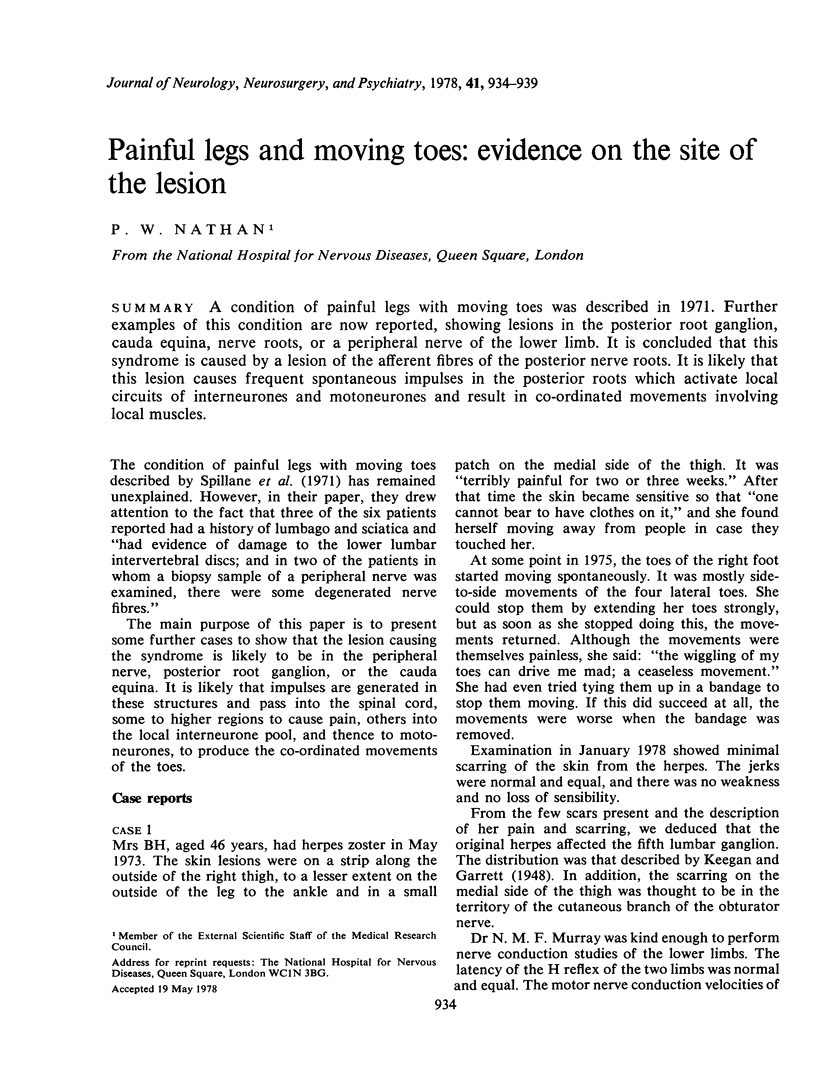
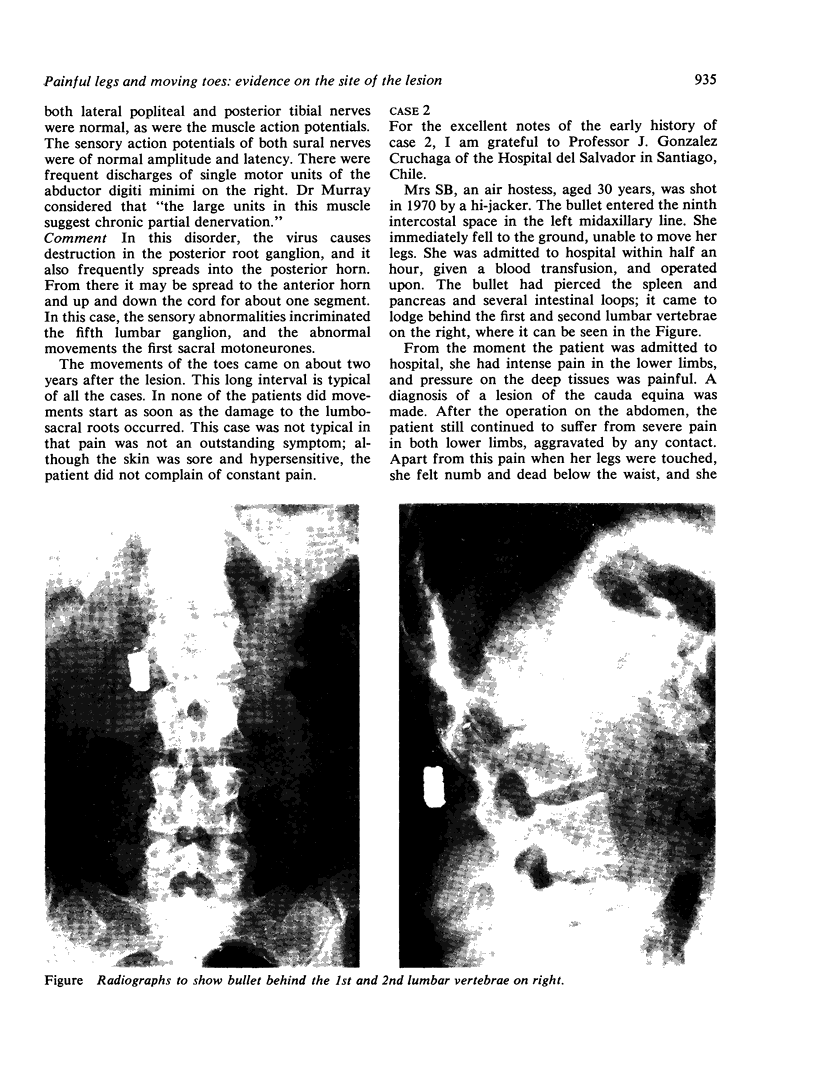
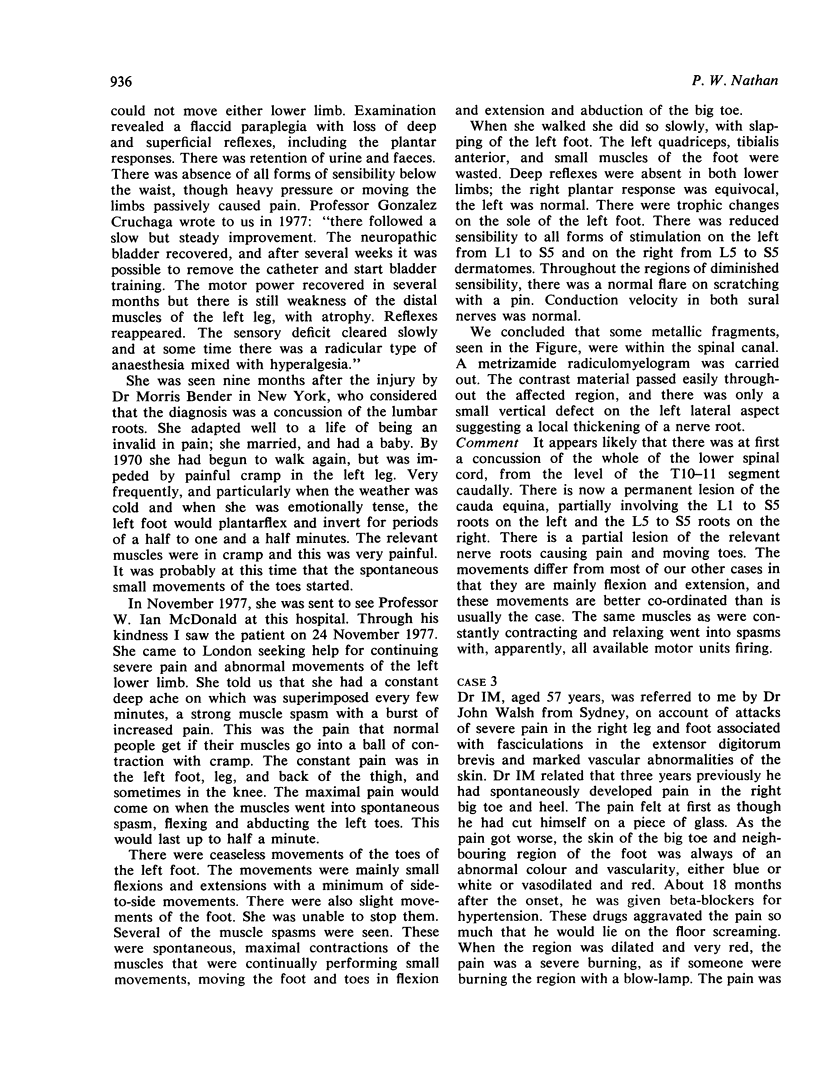
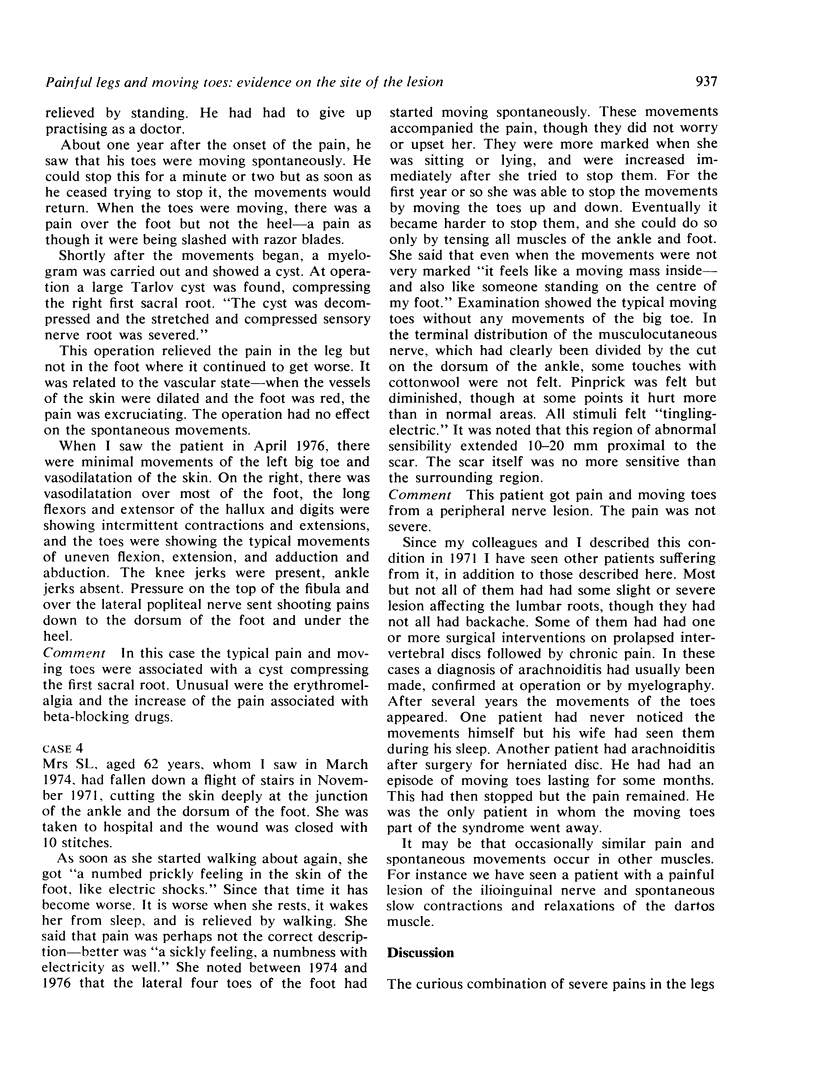
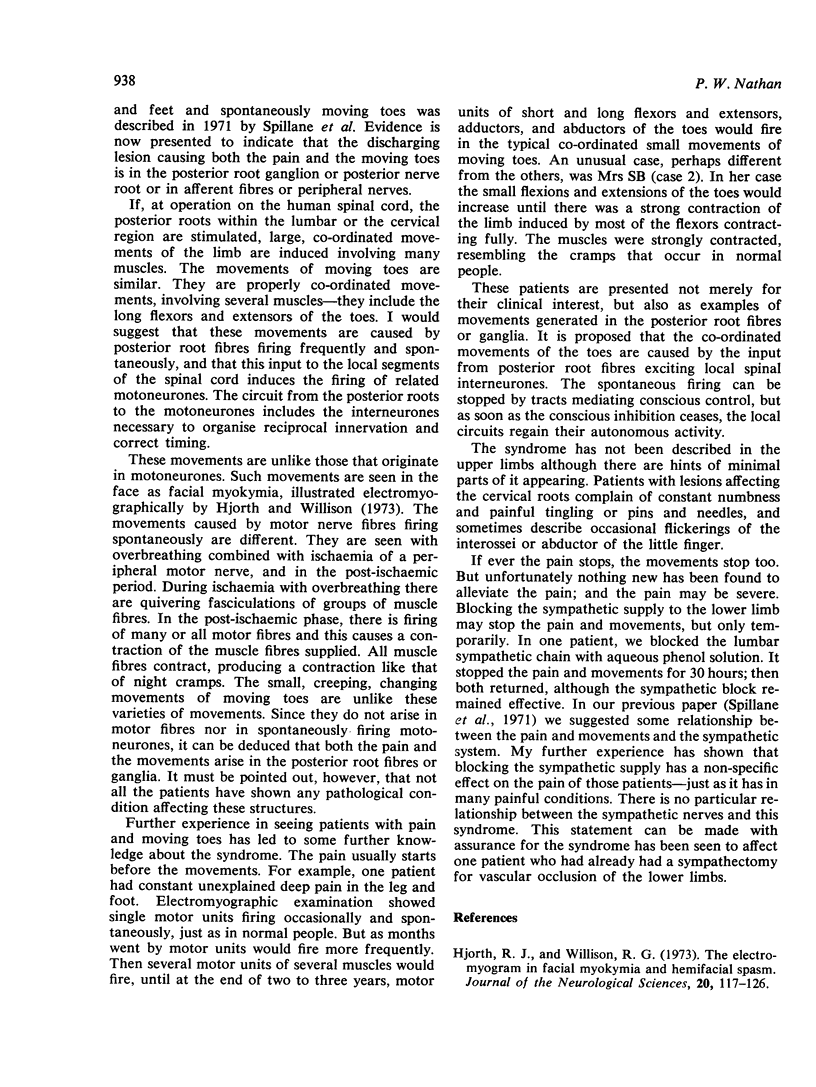

Images in this article
Selected References
These references are in PubMed. This may not be the complete list of references from this article.
- Hjorth R. J., Willison R. G. The electromyogram in facial myokymia and hemifacial spasm. J Neurol Sci. 1973 Oct;20(2):117–126. doi: 10.1016/0022-510x(73)90025-7. [DOI] [PubMed] [Google Scholar]
- Spillane J. D., Nathan P. W., Kelly R. E., Marsden C. D. Painful legs and moving toes. Brain. 1971;94(3):541–556. doi: 10.1093/brain/94.3.541. [DOI] [PubMed] [Google Scholar]



